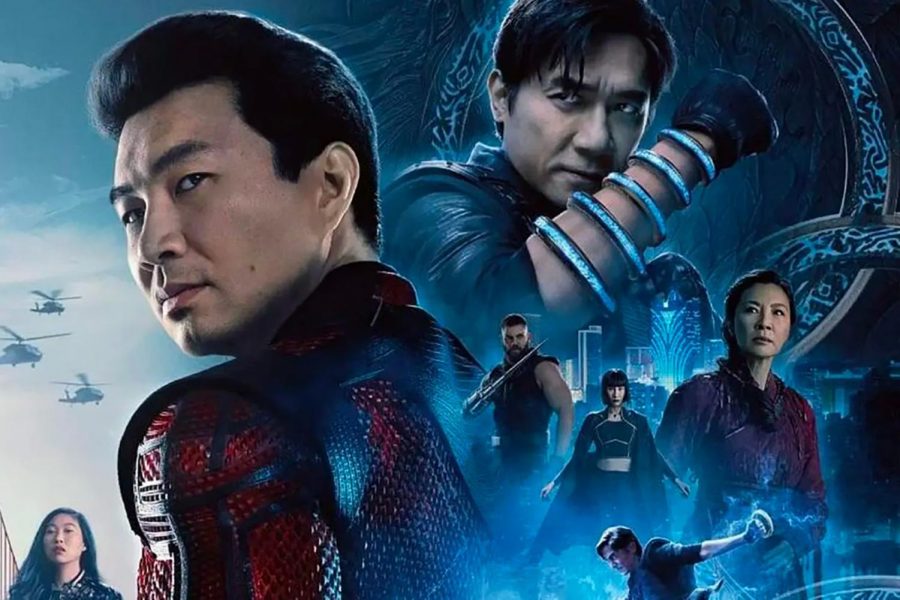Shang-Chi Paves a New Path in the Movie Industry
Shang-Chi and the Legend of the Ten Rings opens up more possibilities in the Marvel Universe while representing Asian culture and crushing stereotypes.
“You are a product of all who came before you. The legacy of your family. The good and the bad. It is all a part of who you are.” – Jiang Nan.
Shang-Chi and the Legend of the Ten Rings hit theaters early in September, but will begin streaming on Disney+ beginning November 12.
The film surprised most, as it earned $94 million in its opening weekend and exploded in headlines, articles, and on Rotten Tomatoes, earning a “Certified Fresh” rating of 92%.
It was the talk of the movie world, earning raves for its incredible action and interesting plot.
“I honestly couldn’t look away,” said Tyler Crisci ‘24. “The movie was so good. The plot, characters, and action were definitely some of Marvel’s best.”
As enjoyable as it was, the movie also created a buzz about representation.
Shang-Chi is the first Asian centered Marvel film. It was one of the projects that made Asian-Americans feel represented in Hollywood. Notre Dame students couldn’t help but agree.
Isabella Wilson ‘24 said, “I think Shang-Chi was the perfect representation and way to highlight Asian culture while still incorporating superheroes. I’m not a huge fan of Marvel, but any representation that makes people feel a part of something is really special.”
As for authentic representation, the cast was predominantly Asian as well as the director, Destin Daniel Cretton, and most of the crew. The filmmakers and cast made sure that the characters were being correctly portrayed.
Those who made Shang-Chi hope it leaves a lasting impression on the world while crushing stereotypes. In the past, South East and East Asian characters have been poorly represented in the film and theatre.
Western cinema has had a rocky history with Asians.
Asian characters are often stereotyped–“men are stripped of their masculinity and women are unfairly painted as either a “dragon lady” or a “china doll.” Asians are also stereotyped as “nerds,” donning glasses and an exaggerated accent, or as Kung Fu masters and killers” (scholar.dominican.edu).
It is stereotypes such as the “Yellow Peril,” the perpetual foreigner, the model minority, the emasculated Asian male and the hyper-sexualized Asian female that lead to misunderstandings, issues with identity, and the gross underrepresention of Asians in the media today.
In Shang-Chi, the female stereotypes, in particular, are skillfully dismantled. Xu Xialing, Jiang Nan, Jiang Li, and Katy are all “compassionate, powerful, and above all, capable women. Asian-American socio-political engagement doesn’t end at Hollywood representation, but the film feels like an affirmation that it’s possible to create a world where Asian femininity is a strength, and not something to fear or otherwise annihilate” (refinery29.com).
Xu Xialing is an expert in martial arts and combat, while Katy found her calling in archery. Jiang Nan and Jiang Li both practice a mystic power that is given to them through their belief in The Great Protector, a dragon that protects the people of Ta Lo.
The movie showcases many aspects of Asian culture, including cultural values along with food, clothing, and martial arts.
Black Panther, being the first predominantly African-American led Marvel film, broke many barriers. Shang-Chi hopes to do the same.
Some may think that the point of making these types of movies is just to make money or help the franchise succeed. Marvel has chosen to invest in the furthering the future of cultural representation in Western media.
Shang-Chi is definitely a must see film for everyone, but especially for those of Asian descent. Children should see superheroes on the big screen that look like them, and adults should see that the film industry is continuing to take steps to becoming more inclusive and diverse.

